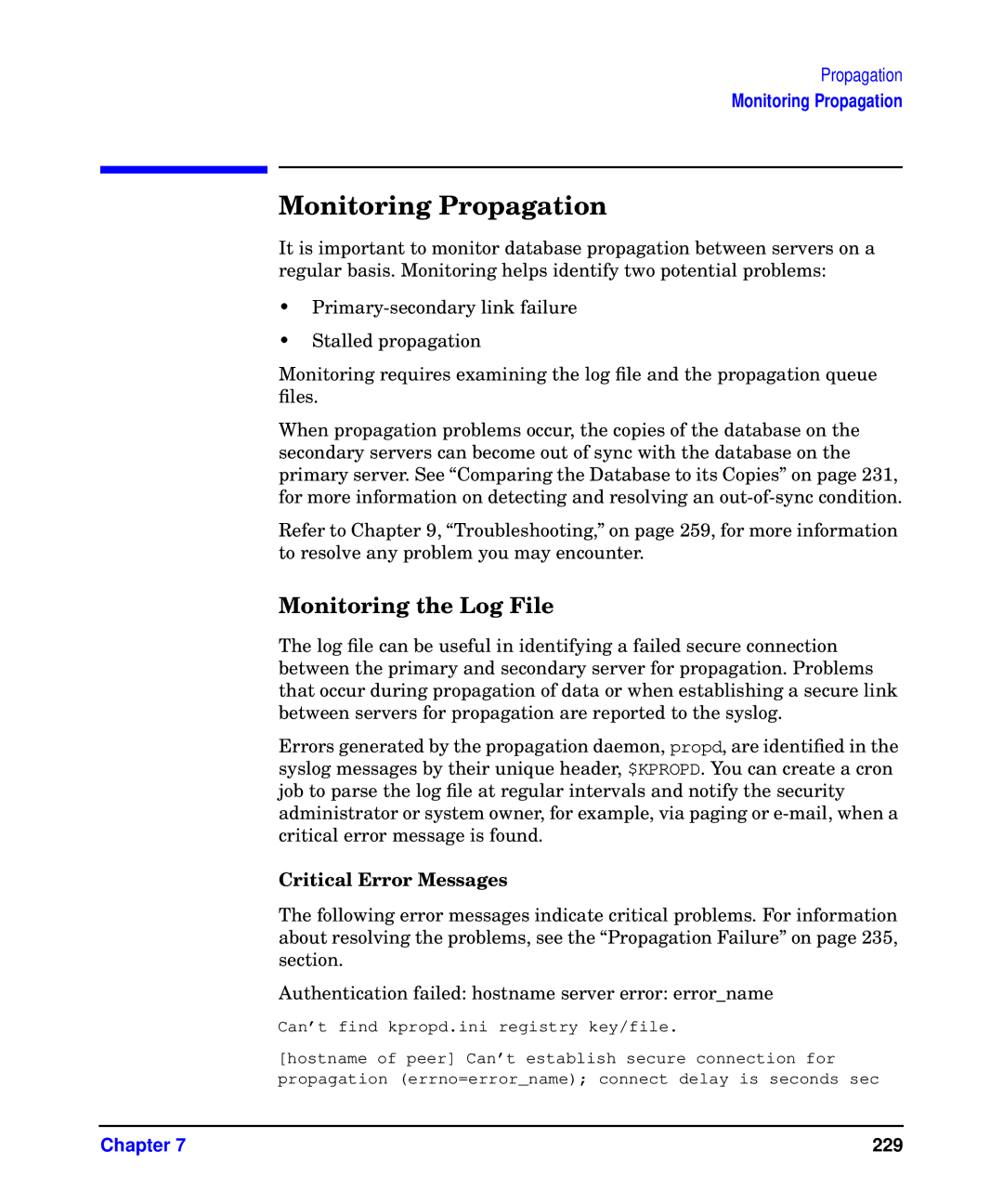
Propagation
Monitoring Propagation
Monitoring Propagation
It is important to monitor database propagation between servers on a regular basis. Monitoring helps identify two potential problems:
•
•Stalled propagation
Monitoring requires examining the log file and the propagation queue files.
When propagation problems occur, the copies of the database on the secondary servers can become out of sync with the database on the primary server. See “Comparing the Database to its Copies” on page 231, for more information on detecting and resolving an
Refer to Chapter 9, “Troubleshooting,” on page 259, for more information to resolve any problem you may encounter.
Monitoring the Log File
The log file can be useful in identifying a failed secure connection between the primary and secondary server for propagation. Problems that occur during propagation of data or when establishing a secure link between servers for propagation are reported to the syslog.
Errors generated by the propagation daemon, propd, are identified in the syslog messages by their unique header, $KPROPD. You can create a cron job to parse the log file at regular intervals and notify the security administrator or system owner, for example, via paging or
Critical Error Messages
The following error messages indicate critical problems. For information about resolving the problems, see the “Propagation Failure” on page 235, section.
Authentication failed: hostname server error: error_name
Can’t find kpropd.ini registry key/file.
[hostname of peer] Can’t establish secure connection for propagation (errno=error_name); connect delay is seconds sec
Chapter 7 | 229 |
